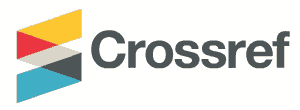Evaluation of Direct Terahertz Radiation on Prospective Communication Applications
DOI:
https://doi.org/10.62146/ijecbe.v1i1.9Keywords:
Terahertz Radiation, Communication, Application, TechnologyAbstract
The continuous development of information and communication technology has brought rapid changes, especially developments in cellular technology, starting with 1G and reaching the fifth development in 2020, 5G. This development continues, as evidenced by the start of 6G technology development in early 2020. The Terahertz (THz) spectrum, which has not been used optimally so far for communication technologies, is one candidate to support the next cellular technology developments. THz Waves offers far wider bandwidth than the existing technologies. Apart from the advantages of THz wave radiation, this research studies THz wave radiation intensity and its potential for communication. By calculating the Atmospheric Attenuation, FSPL and considering the minimum received power of user equipment (UE), THz wave radiation characteristics will be more optimal for use less than 500 meters at 0.1 THz and less than 100 meters at 3 THz. The highest Power density of THz radiation is 7.99 × 10-11 Watt/m2 when using 0.1 THz as frequency and a power transmitter of 10 Watts. The results show that exposure to THz waves in communication applications is safe and acceptable for practical communication use.
References
Inomata, M. et al., 2021. Terahertz Propagation Characteristics for 6G Mobile Communication Systems, pp. 1-5.
A. Mourad, R. Yang, P. H. Lehne and A. de la Oliva, "Towards 6G: Evolution of Key Performance Indicators and Technology Trends," 2020 2nd 6G Wireless Summit (6G SUMMIT), Levi, Finland, 2020, pp. 1-5, doi: 10.1109/6GSUMMIT49458.2020.9083759
Kumar, Arunandan, Yun-fei Liu and Jyotsna Sengupta. "Evolution of Mobile Wireless Communication Networks: 1G to 4G." (2010).
Slalmi, Ahmed & Chaibi, Hasna & Chehri, Abdellah & Rachid, Saadane & Jeon, Gwanggil. (2021). Toward 6G : Understanding network requirements and key performance indicators. Transactions on Emerging Telecommunications Technologies. 32. 10.1002/ett.4201.
H. Wymeersch et al., "6G Radio Requirements to Support Integrated Communication, Localization, and Sensing," 2022 Joint European Conference on Networks and Communications & 6G Summit (EuCNC/6G Summit), Grenoble, France, 2022, pp. 463-469, doi: 10.1109/EuCNC/6GSummit54941.2022.9815783.
Chowdhury, M. et al., 2020. 6G Wireless Communication Systems: Applications, Requirements, Technologies, Challenges, and Research Directions. IEEE Open Journal of the Communications Society, Volume 1, pp. 957-975.
M. Kochláň and J. Miček, "Indoor propagation of 2.4GHz radio signal propagation models and experimental results," The 10th International Conference on Digital Technologies 2014, 2014, pp. 125-129, doi: 10.1109/DT.2014.6868703.
D. Beauvarlet and K. L. Virga, "Indoor propagation characteristics for wireless communications in the 30 GHz range," IEEE Antennas and Propagation Society International Symposium (IEEE Cat. No.02CH37313), 2002, pp. 244-247 vol.1, doi: 10.1109/APS.2002.1016294.
M. C. Lawton, R. L. Davies and J. P. McGeehan, "Prediction modelling of indoor radio propagation for the pico-cellular environment," Antennas and Propagation Society Symposium 1991 Digest, 1991, pp. 1536-1539 vol.3, doi: 10.1109/APS.1991.175145.
D. Serghiou, M. Khalily, T. W. C. Brown and R. Tafazolli, "Terahertz Channel Propagation Phenomena, Measurement Techniques and Modeling for 6G Wireless Communication Applications: A Survey, Open Challenges and Future Research Directions," in IEEE Communications Surveys & Tutorials, vol. 24, no. 4, pp. 1957-1996, Fourthquarter 2022, doi: 10.1109/COMST.2022.3205505.
A. Shafie, N. Yang, C. Han, J. M. Jornet, M. Juntti and T. Kurner, "Terahertz Communications for 6G and Beyond Wireless Networks: Challenges, Key Advancements, and Opportunities," in IEEE Network, doi: 10.1109/MNET.118.2200057.
Sitnikov DS, Ilina IV, Revkova VA, Rodionov SA, Gurova SA, Shatalova RO, Kovalev AV, Ovchinnikov AV, Chefonov OV, Konoplyannikov MA, Kalsin VA, Baklaushev VP. Effects of high intensity non-ionizing terahertz radiation on human skin fibroblasts. Biomed Opt Express. 2021 Oct 26;12(11):7122-7138. doi: 10.1364/BOE.440460. PMID: 34858704; PMCID: PMC8606137.
Y. Huo, X. Dong and W. Xu, "5G Cellular User Equipment: From Theory to Practical Hardware Design," in IEEE Access, vol. 5, pp. 13992-14010, 2017, doi: 10.1109/ACCESS.2017.2727550.
GSMA," International EMF Exposure Guideline : Explaining the 2020 RF-EMF exposure guidelines published by the International Commission on Non-Ionizing Radiation Protection (ICNIRP)", 2021.
Balanis, Constantine A. Antenna Theory: Analysis and Design. 3rd ed. Hoboken, NJ: John Wiley, 2005
M. Tamosiunaite, S. Tamosiunas, M. Zilinskas, and G. Valusis, 'Atmospheric Attenuation of the Terahertz Wireless Networks', Broadband Communications Networks - Recent Advances and Lessons from Practice. InTech, Sep. 19, 2018. doi: 10.5772/intechopen.72205.
R. Appleby and H. B. Wallace, "Standoff Detection of Weapons and Contraband in the 100 GHz to 1 THz Region," in IEEE Transactions on Antennas and Propagation, vol. 55, no. 11, pp. 2944-2956, Nov. 2007, doi: 10.1109/TAP.2007.908543.
Attenuation by atmospheric gases, ITU-R P.676-11, International Telecommunications Union, Geneva, Switzerland, Sep. 2016.
European Telecommunications Standards Institute, "LTE;Evolved Universal Terrestrial Radio Access (E-UTRA);Requirements for support of radio resource management," European Telecommunications Standards Institute, ETSI-TS-136, 2008. [Online]. Available: http://www.etsi.org . [Accessed: Mar. 05, 2023]
European Telecommunications Standards Institute, "5G;NR;Requirements for support of radio resource management," European Telecommunications Standards Institute, ETSI-TS-138, 2018. [Online]. Available: http://www.etsi.org . [Accessed: Mar. 05, 2023]
ICNIRP. Guidelines for limiting exposure to electromagnetic fields (100 kHz to 300 GHz). Health Phys 118(5):483–524; 2020. Pre-print. DOI: 10.1097/HP.0000000000001210
Downloads
Published
How to Cite
Issue
Section
License
Copyright (c) 2023 IJECBE

This work is licensed under a Creative Commons Attribution 4.0 International License.






